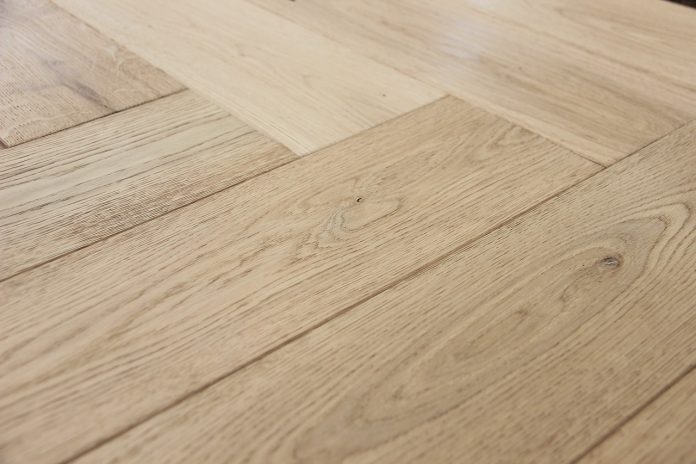Chances are, before you looked into updating your floor, you didn’t realize how many different options there were available for you! When you’re looking for something a bit different, however, it’s hard to know how far to take it. The floor takes up a lot of space in your house, after all.
We’ve taken a look at the herringbone flooring style, an old floor pattern that is still every bit as relevant today as it was in the Renaissance period.
Table of Contents
Herringbone Flooring
Herringbone floors are no new product on the market. This intriguing type of floor – named after its signature pattern resembling the bones of a herring fish – has been around for centuries. Originally used in the regal mansions of aristocracy or their even more luxurious castles, herringbone floors still carry a sense of elegance.
Is a Herringbone Floor a Good Choice?
Herringbone floors benefit from being long-lasting and durable, which means they are not only aesthetic but also make a great investment. Since they have their roots in royalty, these floors also add a touch of sophistication and elegance to any room. They may even help you increase the value of your home.
How to Look After Herringbone Flooring
You’ll want to keep these floors looking their best as they’ll instantly become a feature of your home that you love. Regular sweeping or vacuuming to keep dirt and debris away is a must. You should also clean up any spills or stains as soon as possible to prevent lasting damage.
When cleaning a herringbone floor, use a pH-neutral cleaner and avoid excessive use of water as this has the potential to damage or warp the wood.
A benefit of herringbone flooring is the natural products used, which allow it to be refinished over time. If you already have herringbone floors and they need an update, you can refinish the surface by sanding and varnishing it. Refinishing your floor is also a great option if you’re looking to change the style of your house. For example, you could add a darker oil to deepen the colour of the wood.
What Rooms Are Suitable For Herringbone Flooring?
You can use herringbone flooring in a variety of rooms. Living rooms and dining rooms are obvious choices as you host people here, meaning they’re a great place to show off your floors. Herringbone really can be used to add refinement and elegance to any area of the house, however.
Herringbone fits with many different interior design styles, from traditional to modern, so you don’t need to worry about installing it somewhere that you regularly redecorate. You can pair it with Regency furniture, art deco or even cottage-core! If you’re looking for a brutalist vibe in your home, however, this may not be the best choice.
Furthermore, open-plan spaces work really well with this type of flooring as it encourages continuity and flow between rooms.
What Are The Negatives of Herringbone Flooring?
Despite being a popular choice for many homeowners, as with any renovation, there are downsides to consider.
One of the things that may put some off herringbone flooring is that it carries a more significant price tag than other kinds of floors. This is because it is typically made out of higher-quality materials which can drive up manufacturing costs.
Installation is also a little more tricky than other kinds of flooring. This can create an additional cost if you’re paying someone to install it, or make it a big DIY job if you’re planning to install it yourself.
Herringbone isn’t necessarily the easiest type of floor to clean either, as dirt can become trapped in the grooves of the pattern.
Choosing To Add Herringbone To Your Home
If you’re going to choose this style, you should have a look at the different options available. You can even order free samples to see how this flooring type would look in your home and test different shades/tones in different lights.














